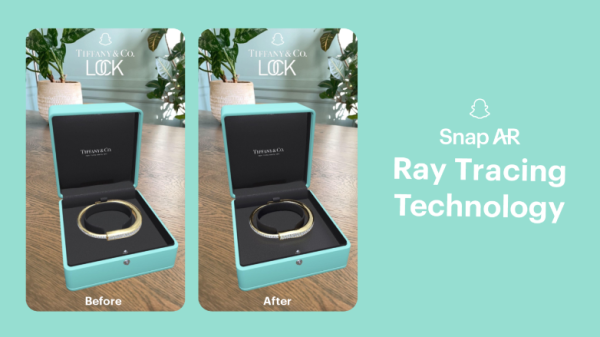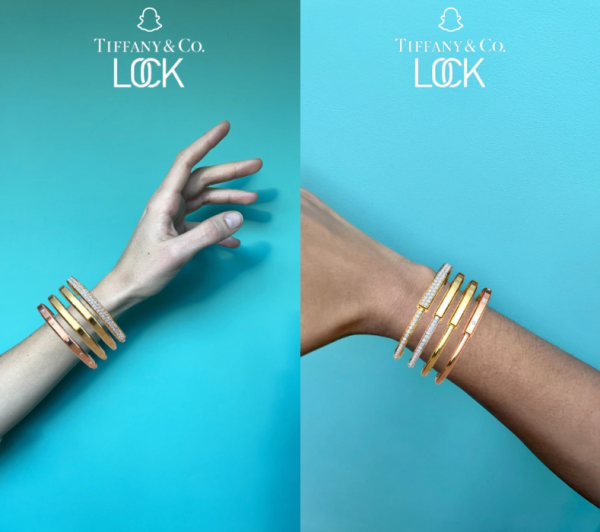Snap Launches Ray Tracing Technology For its AR Lenses
Snap is launching ray tracing technology for its AR Lens Studio for developers from across the globe.
Ray tracing is a technique in computer graphics that makes it possible to realistically render light and shine on augmented reality (AR) artifacts.
Snap is partnering with Tiffany & Co in launching the first Lens that will be integrated with ray tracing. The Lens will allow users to try on the Tiffany bracelets via augmented reality and buy them directly from the app.

Snap says it is the first company to deploy ray tracing functionality on mobile at this scale. Ray tracing technology is typically implemented in offline applications like console games. Snap is now bringing its highly realistic quality to mobile.
Ray tracing technology simulates the behavior of light in the physical world by applying an algorithm in tracing the path a beam of light would follow in the real world. This ray tracing functionality allows developers to enable virtual rays of light to appear like they are bounding off the digital objects, thereby simulating a high level of realism by creating ultra-realistic reflections of light.
Ray tracing will add enhancements to the quality of the Snapchat Lenses by enabling the creation of Lenses with objects like metal surfaces, stones, or glass surfaces such that light appears to bounce off of or whose surfaces reflect light.
In a blog post, the company said Snapchatters typically use AR in trying on a number of products from their favorite fashion brands and in having personal, fun, and accessible shopping experiences. The company announced the launch of Ray Tracing in the Lens Studio via the blog post stating that the Lenses will now have AR diamond jewelry, clothing and other digital items with “ultra-realistic quality.”

In 2022, Snap revealed that over 250 million Snapchat users used its AR Shopping Lenses over 5 billion times. Snap is deeply invested in the development of shopping Lens creation and has been working on finetuning the technology. It is, thus, unsurprising, that the company added ray tracing to its app to improve the experiences. The new augmented reality improvements could also improve the company’s competitiveness against some of the social media giants.
In 2022, Snap also updated the Lens Web Builder, enabling brands to create shopping lenses in minutes.
Snap has also announced that retailers will begin accessing a new AR image-processing technology in its 3D asset manager that will allow for easier and faster development of augmented reality shopping experiences.
Snap recently entered into a partnership with Amazon for its AR-powered virtual try-on shopping feature. The partnership saw Amazon begin providing Snapchat users with AR try-on experiences that enable them to digitally try on eyewear styles from various popular brands. The two are planning to expand into other product categories beyond eyewear in the coming months.
https://virtualrealitytimes.com/2023/02/20/snap-launches-ray-tracing-technology-for-its-ar-lenses/https://virtualrealitytimes.com/wp-content/uploads/2023/02/Snap-AR-Ray-Tracing-Technology-600x337.pnghttps://virtualrealitytimes.com/wp-content/uploads/2023/02/Snap-AR-Ray-Tracing-Technology-150x90.pngAugmented RealityTechnologySnap is launching ray tracing technology for its AR Lens Studio for developers from across the globe. Ray tracing is a technique in computer graphics that makes it possible to realistically render light and shine on augmented reality (AR) artifacts. Snap is partnering with Tiffany & Co in launching the first...Rob GrantRob Grant[email protected]AuthorVirtual Reality Times - Metaverse & VR
